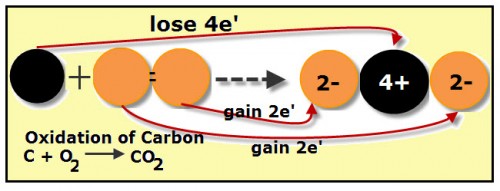Respiration is more than just breathing. In fact, while breathing is necessary to supply oxygen, the respiration process has three sets of chemical reactions: glycolysis; the Krebs cycle, or the citric acid cycle; and the electron transport system.
Each of the three parts of respiration is carried out in every cell of your body. Respiration is the process by which your cells produce the energy needed to carry out all your body’s life-processes. Everything that your body does involves a chemical reaction of some kind. Some chemical reactions are spontaneous, meaning they happen without any energy input. Most chemical reactions need energy to get started. Some just need to be “kicked off,” meaning a bit of input energy starts the reaction, but then it continues on its own. Scientists call this starter energy–activation energy.
Fireworks are good examples of chemical reactions needing just a little activation energy to get them started. The heat energy from a burning fuse is enough to start the explosive reaction of the chemicals. A little input energy in this ca se nets a large amount of released chemical energy.
se nets a large amount of released chemical energy.
Chemical Energy: Energy stored in chemical bonds between atoms. For me, I visualize bond energy like having a compressed spring inside a closed can. When the can is opened, much like when chemical bonds are broken, out pops the spring (mechanical energy). But, with chemical bonds its chemical energy, which often is heat energy.
Each time a chemical reaction occurs in your body, energy is either taken in or given off. Yes, some of the reactions release heat, which keeps your internal body temperature stable. But most of the energy is stored in very high energy chemical bonds. While all chemical bonds contain stored energy, the “chemical energy bank” is adenosine triphosphate (ATP). 
One way cells obtain energy is by the oxidation of glucose. The energy released from reactions is used to build adenosine triphosphate (ATP) molecules, which can be considered the energy currency of the cell.
The term oxidation is a bit misleading in that when a substance is oxidized it loses one or more electrons.
Yes, oxidation also describes the combination with oxygen, but the substance being oxidized loses electrons. In the diagram, the black spheres represent carbon atoms and the orange spheres are oxygen atoms. As reactants, the carbon and oxygen atoms have no charge because they have an equal number of electrons (-) and protons (+). During this combination reaction of carbon and oxygen, the carbon atom loses 4 electrons, so that it now has 4 more protons than electrons. This give the carbon a 4+ charge. The oxygen atoms each gain 2 electrons, which gives them each 2 more electrons than protons. Thus, each oxygen atom has a 2- charge.
Notice that when carbon is oxidized, there is an equal number of electrons lost and gained. This is always true. So it is also true to say than when something is oxidized it loses electrons and something else is reduced by gaining electrons. For the reaction shown, the carbon is oxidized (loses electrons) and the oxygen is reduced (gains electrons).
Respiration is an energy producing process with the starting reactants being glucose and oxygen. In other words, respiration is the oxidation of glucose oxidation. The following word equation expresses the initial reactants and the products for the oxidation of glucose.
glucose + 6 oxygen yields 6 carbon dioxide + 3 water + 38 ATP
As previously stated, respiration is a complex energy producing process with three basic parts.
I am working on the links for the following. They will be activated as soon as possible.
GLYCOLYSIS
KREB CYCLE (CITRIC ACID CYCLE)
ELECTRON TRANSPORT SYSTEM